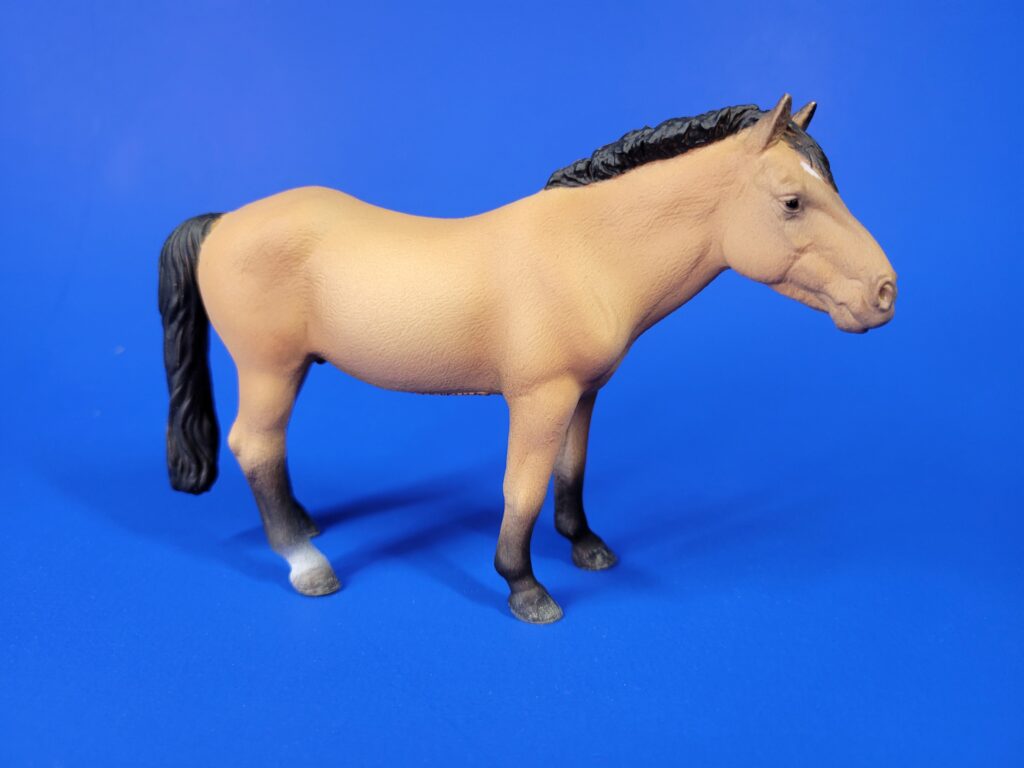
As always, I must thank Happy Hen Toys for their sample offer for this review! The Mongolian horse derives its name from its country of origin and it enjoys a long and successful history in the region. This fame at one time stretched all the way from Japan to Western Europe as it aligned with the conquest of the famed Genghis Khan. CollectA released this magnificent breed with the ID number #88919 back in 2021 and while it is sculpted in a placid looking mood, this model also presents its power and tenacity in its small stocky body.
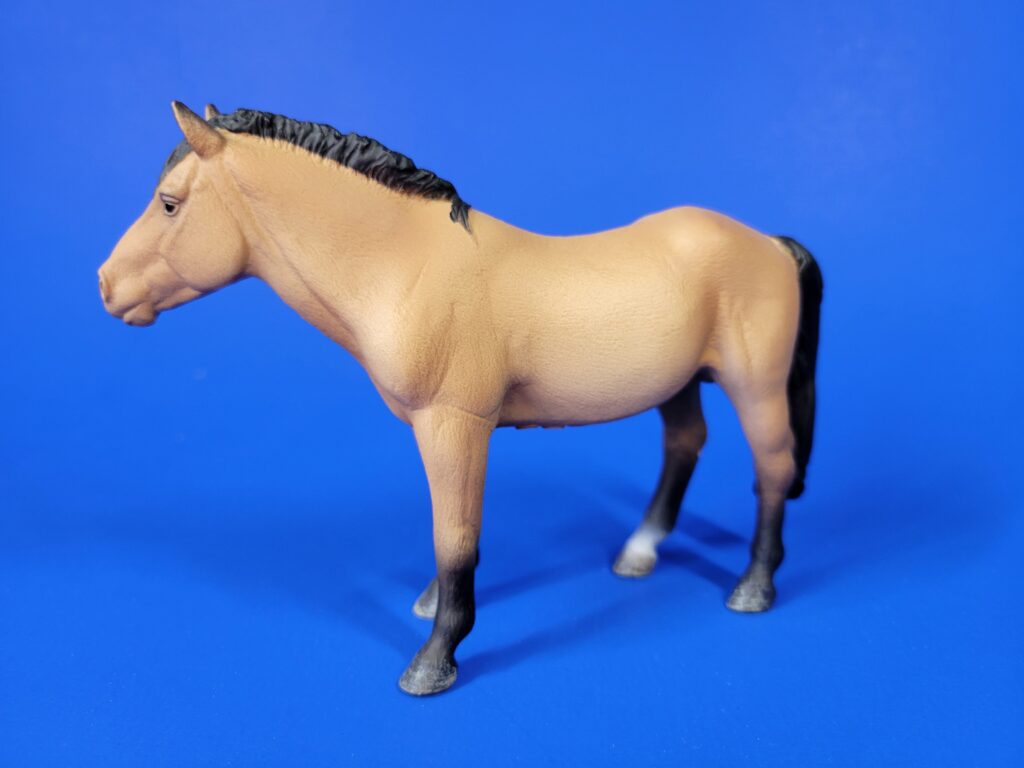
This breed is purported to be unchanged as far back as the late 12th century! These horses originally split from the Przewalksi’s Horse and the European Wild Horse roughly 120,000-240,000 years ago (well before domestication; in 2011 genetic testing confirmed that they are not descendants of the Przewalksi’s Horse). They were the founding stock for a number of Asian horse breeds such as the Tuvinian, Akhaltekin, Yunan, and even the Japanese Chenju. The Mongolian horse is well known for its uniquely high genetic diversity score in comparison to other ancient breeds like the Arabian or the bottle-necked Przewalksi. This high score indicates that there has been very little human interference in their breeding selection. The earliest Western description of the breed hails from archbishop Giovanni da Pian del Carpine in the 13th century where he stated that they are not very tall or large animals “but exceedingly strong and maintained with little provender”. By the year 1918 there was a census of 1,500,000 horses; today there are something like 3 million of these animals in Mongolia which far outweighs the human population in the region.
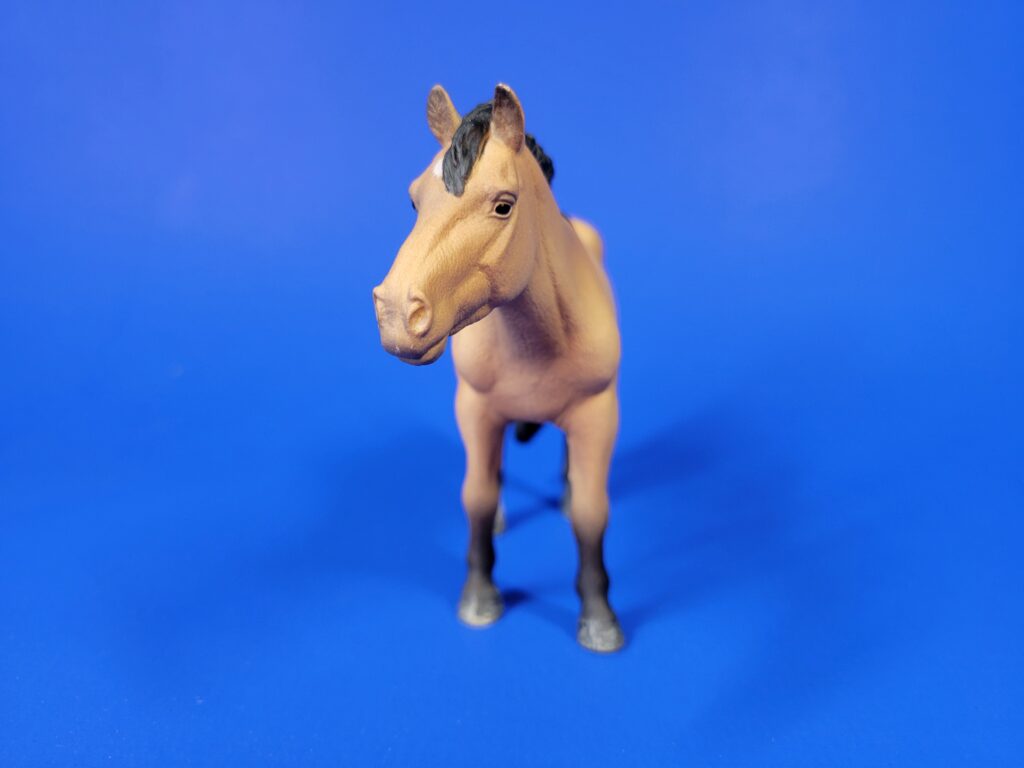
This breed is very small and stocky, with short legs and a large head. They often only stand at 12-14hh. Their small bodies have incredible stamina and endurance where they can maintain a full gallop for 10 km and pull carts weighing 4,400 lbs for 50-60 km a day. They require very little care and find their own grazing. Colors vary widely and are prized differently in the various regions of Mongolia. Nomads did not participate in selective breeding the way Westerners have, and thus this breed has been semi-feral in its day to day life and reproduction which has led to hardy animals who may live to be 20-40 years old. They may have to endure temperatures of 86F degrees/30C degrees down to -40F degrees/-40C degrees!
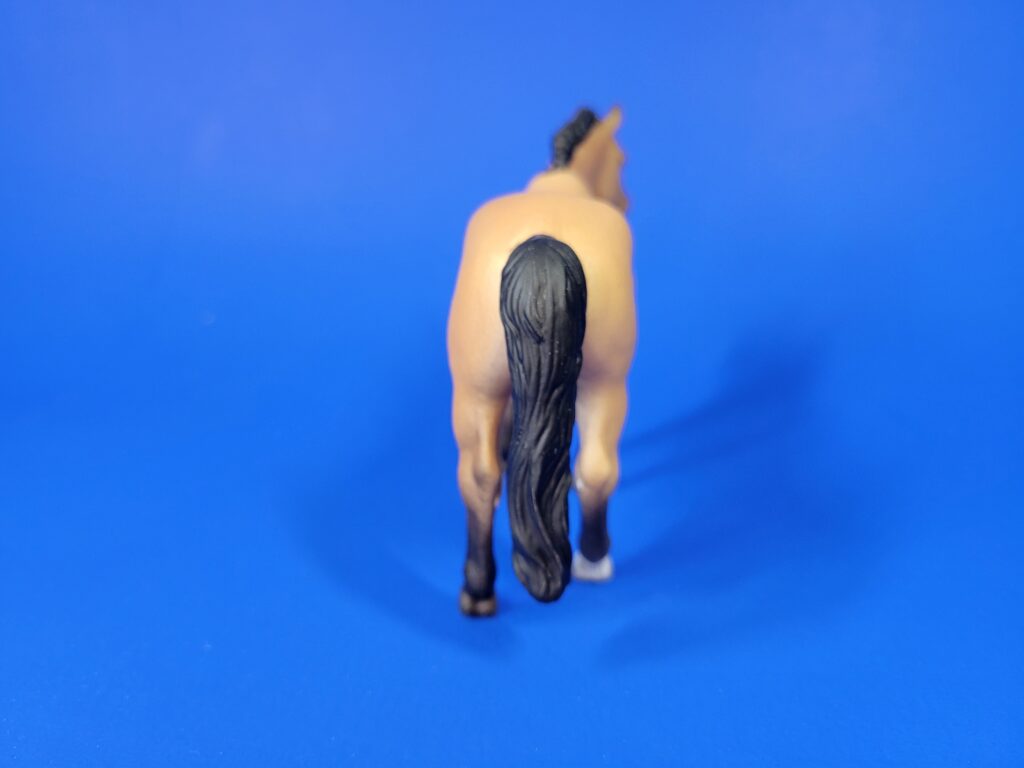
Breeding projects vary widely with these animals- they may be cross bred to more fragile breeds in an attempt to create a faster race horse (foreign breeds like the Arabian find the climate very difficult to endure, however, and often die as a result of this harsh reality). The Mongol horse has established many Japanese stock animals including the Misaki, Taishu, Tokara, Kiso, Yonaguni, Noma, Hokkaido, and Miyako breeds. There are even indications of further spread of Mongol horse blood in Iceland, Scandinavia, Central Europe and even the British Isles linking them to the Norwegian Fjord, Nordland, Icelandic Horse, Exmoor Pony, Scottish Highland Pony, Shetland Pony, and Connemara Pony.
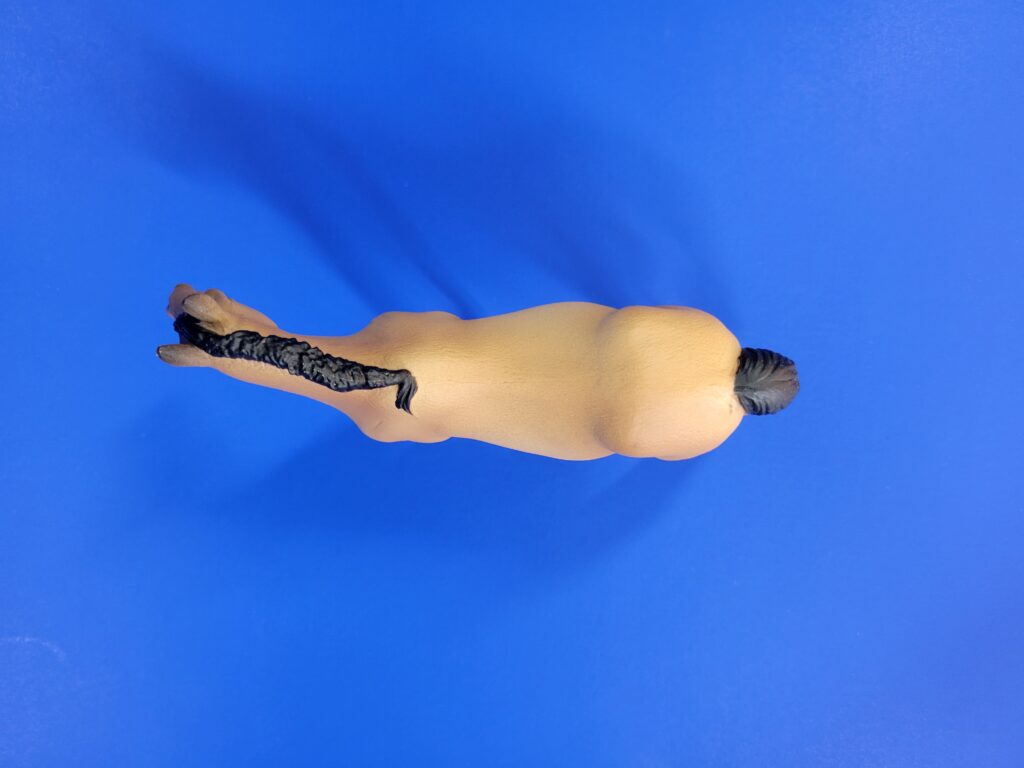
The first domestication is believed to have occurred in the Eurasian Steppe. Today these animals are eaten for protein, hair fibers are used for rope, clothing, decoration items, and are milked. Mares may be milked 6 or more times a day, producing 0.11 lbs of milk at each session (662 lbs a year). This milk may be fermented into the popular alcoholic drinks of kumis and airag. The breed is perhaps best known for its connection of Genghis Khan and his conquest of Asia and Europe. They were slower than Western breeds, given their shorter legs, but their hardiness, stamina, self-sufficiency, and smarts made them the ideal mount. Mares were often preferred given their ability to produce milk for their masters. They were often trained to be dog-like and follow their master around, each soldier might have 5-20 horses with him during a conflict to be swapped out for a fresh mount at any time. Traditionally regarded as some of the best horsemen in the world, Mongolians prize racing and archery from horseback, pulling off feats such as riding a horse at full gallop, sliding off to the side and shooting a bow from under the horse’s muzzle.
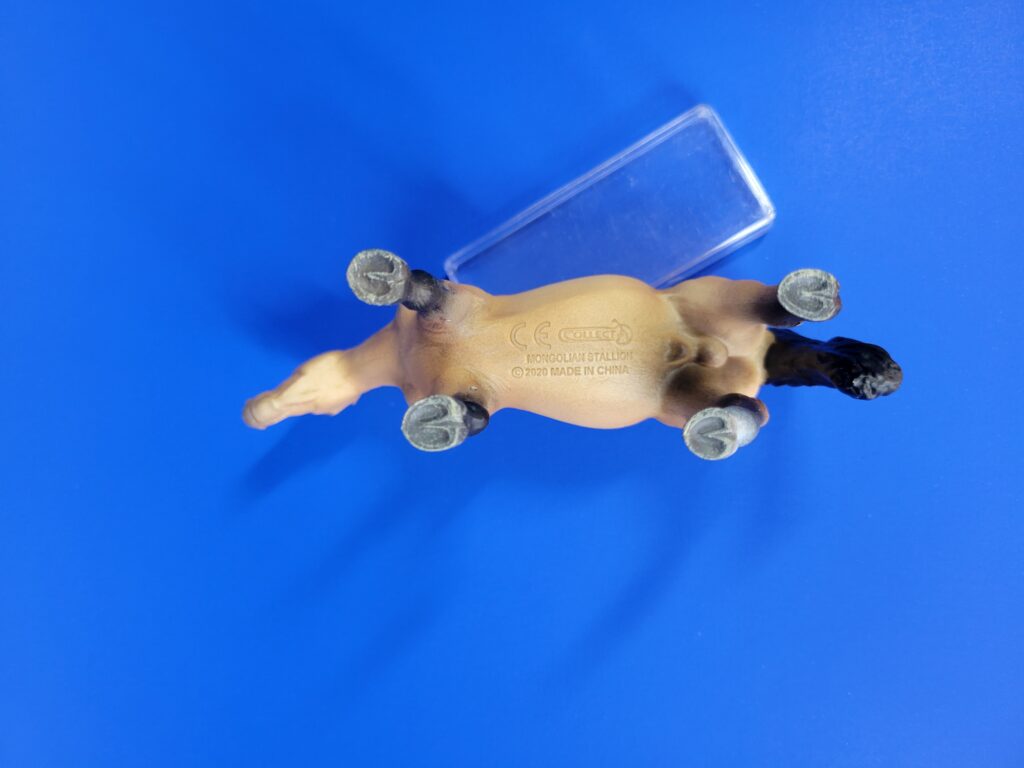
Races are ordinarily 30 km and can involve thousands of horses! Foreign horses are allowed to race but are all too often winded and exhausted by the end of it while the native Mongol horses are better designed for such distances and the climate. However, both foreign and native animals are known to die from these ordeals. The horse itself is often the focus of the sport, rather than the rider, and the talent and ability of the individual animal is prized. Horse husbandry is taught to children in a family through oral traditions rather than written records, each family will have their own secrets and tools of the trade. The care of these animals has been so prized that Genghis Khan himself abhorred the mistreatment of horses- instructing his soldiers to keep the crupper loose and the bridle out of the horse’s mouth (preventing unnecessary galloping and tiring of their mounts in and out of combat), as well as the general taboo of using a whip. Breaking these rules, especially during the Khan’s time, could result in terminal consequence for the rider.
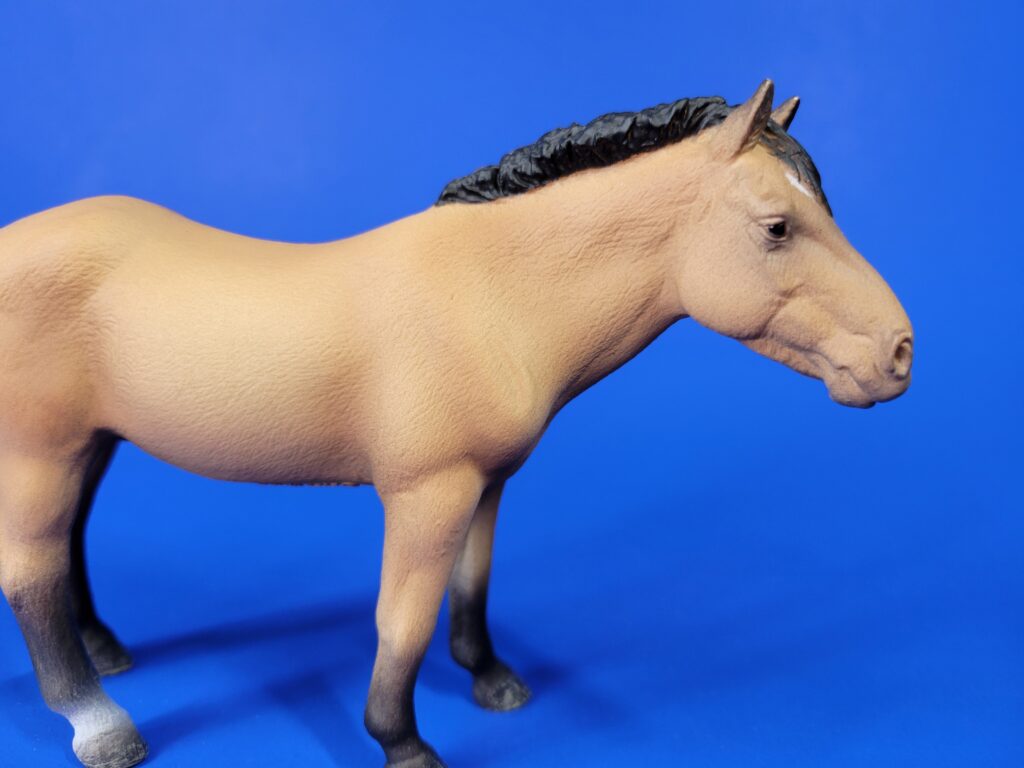
In the region, this breed holds high status in mythology, religion, and culture also. Their milk may be used for a variety of purification rituals and religious ceremonies; manes are never cut (especially for stallions) because it is believed to harbor the spirit of the animal. There are over 500 words used to describe horses and they hold much more prestige over the other nomadic herd animals such as camels, oxen/yaks, sheep, goats, and cattle.
The model itself is that of a stallion and as previously mentioned is in a very relaxed posture. The model is a bay dun type of coat, with a small star on its forehead and one short sock on his right hind leg. His large head is held at an upright but relaxed level, his ears are pricked forward. You can see the sturdy proportions and musculature around the shoulders, haunches, and legs.
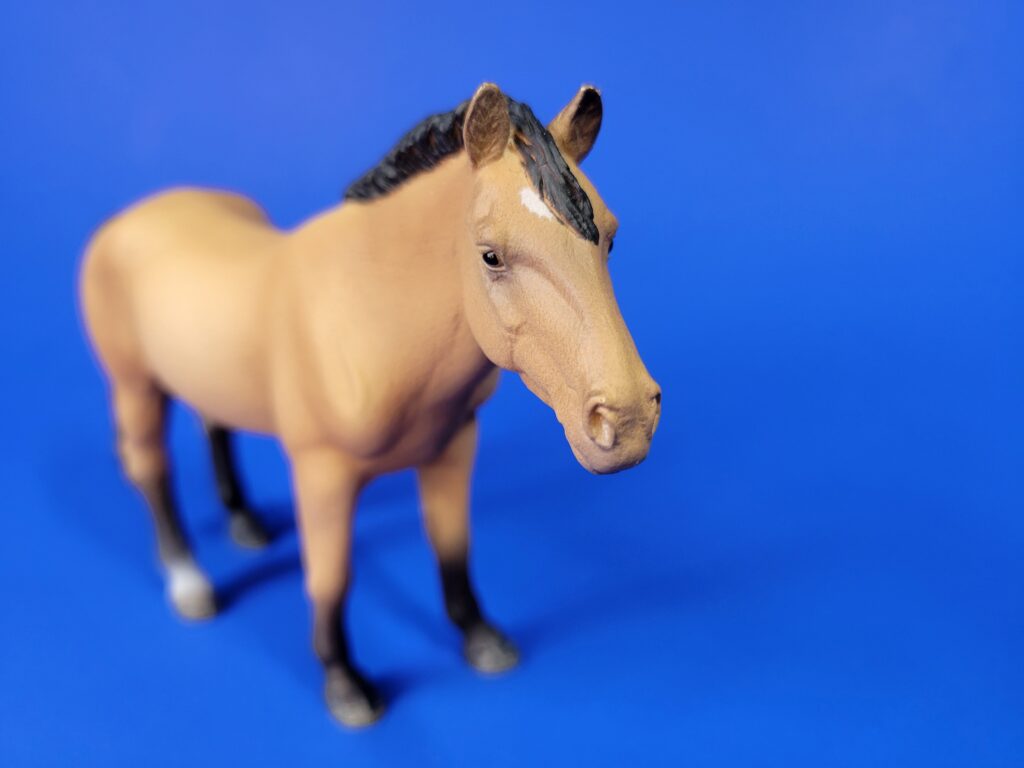
This is another very unique breed presented by CollectA and is a must have for anyone who enjoys domestic horses. You can purchase this and similar models at the Happy Hen Toys website- check them out for any of your toy purchasing!
Disclaimer: links to Ebay and Amazon on the AnimalToyBlog are affiliate links, so we make a small commission if you use them. Thanks for supporting us!





When I first started expanding beyond arthropods, I bought Ana’s Mojo Fun Thoroughbred to be my ‘horse’. When I first started expanding to feral/ancient breeds, this was my first purchase, and I think today it remains my favorite horse figure!
Thanks for bringing it to our Blog!